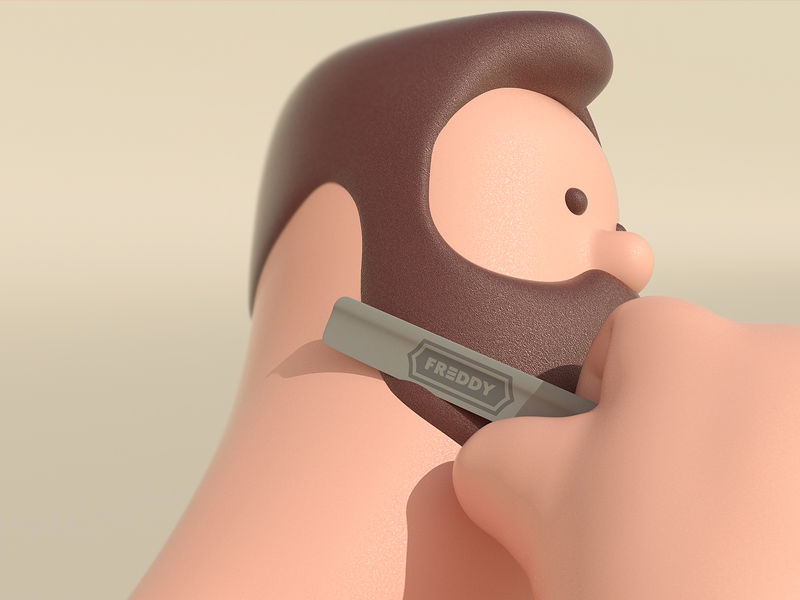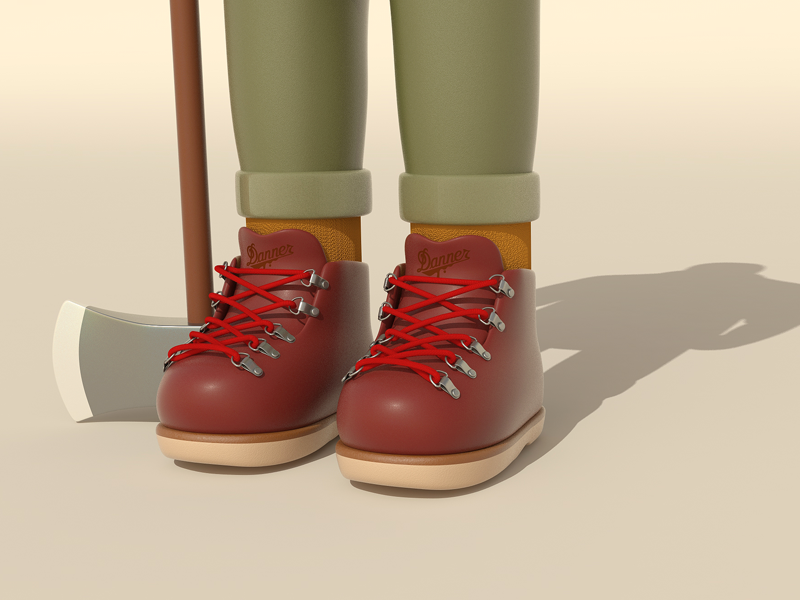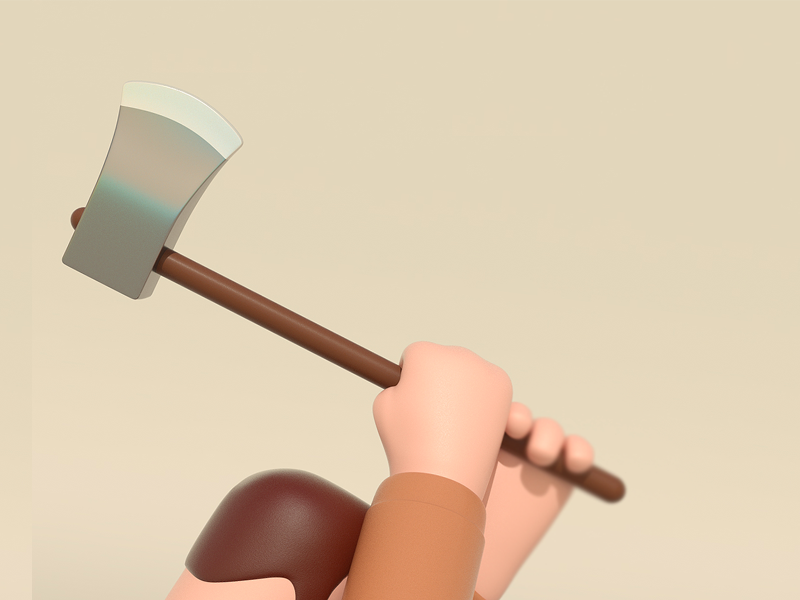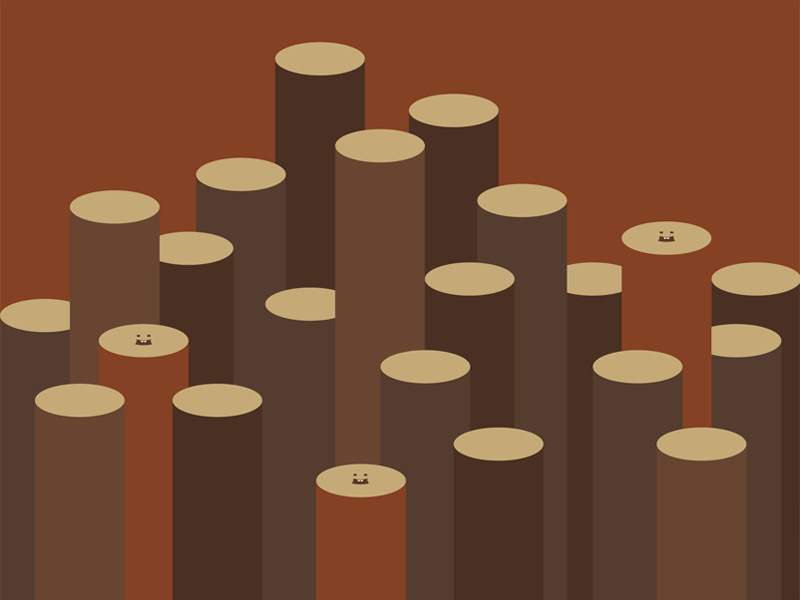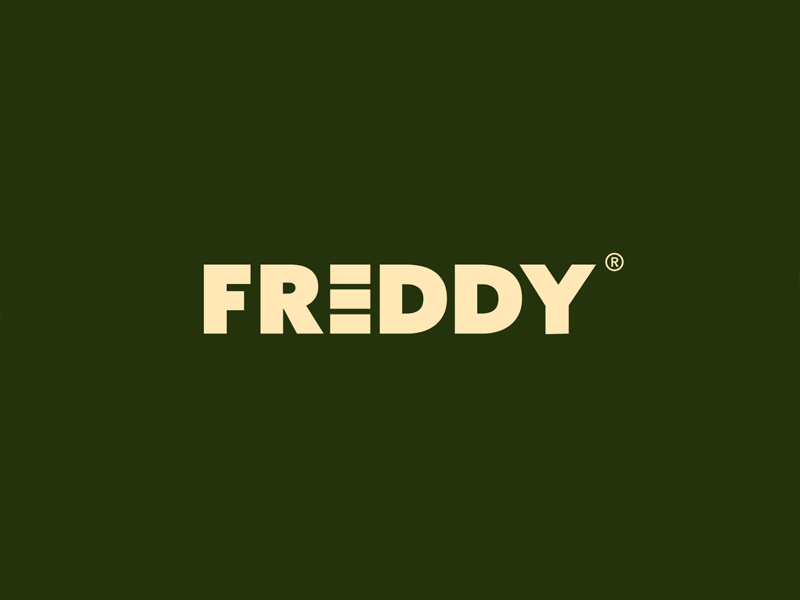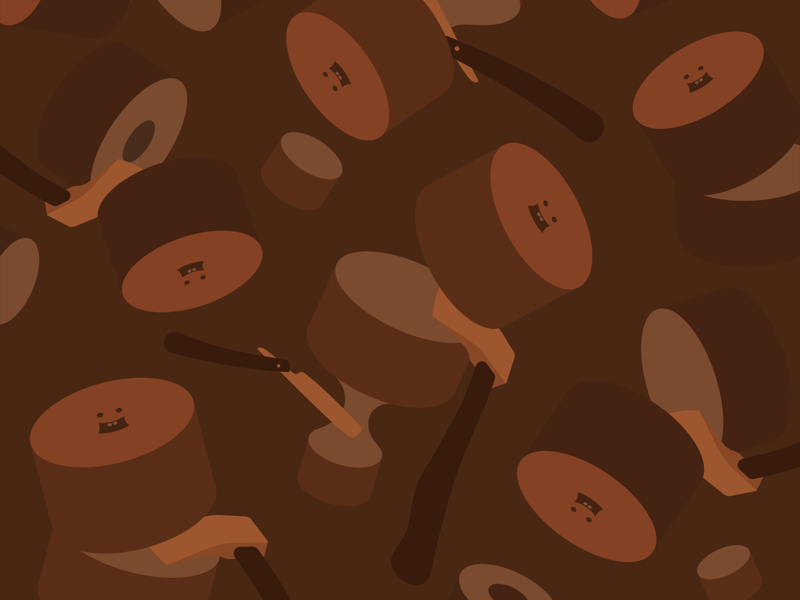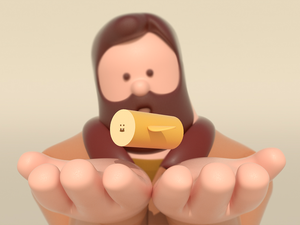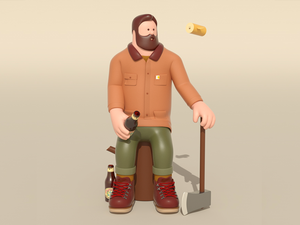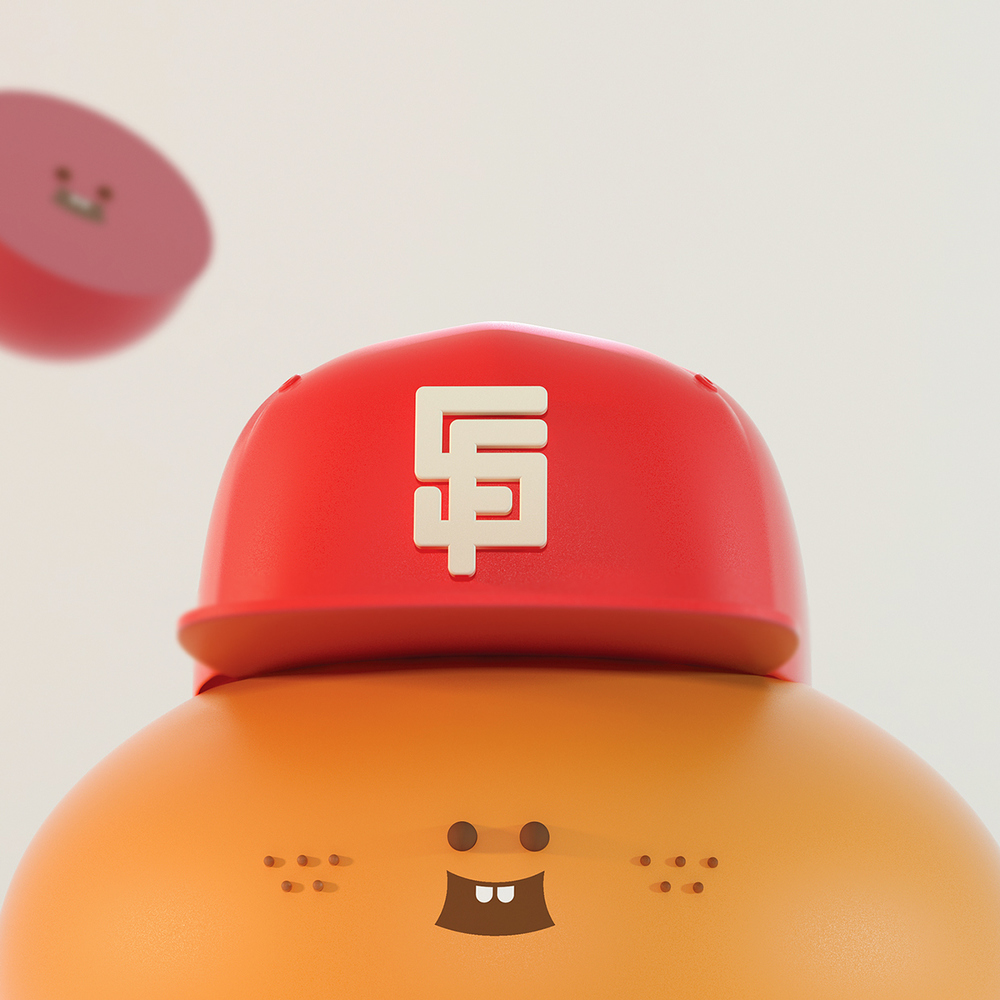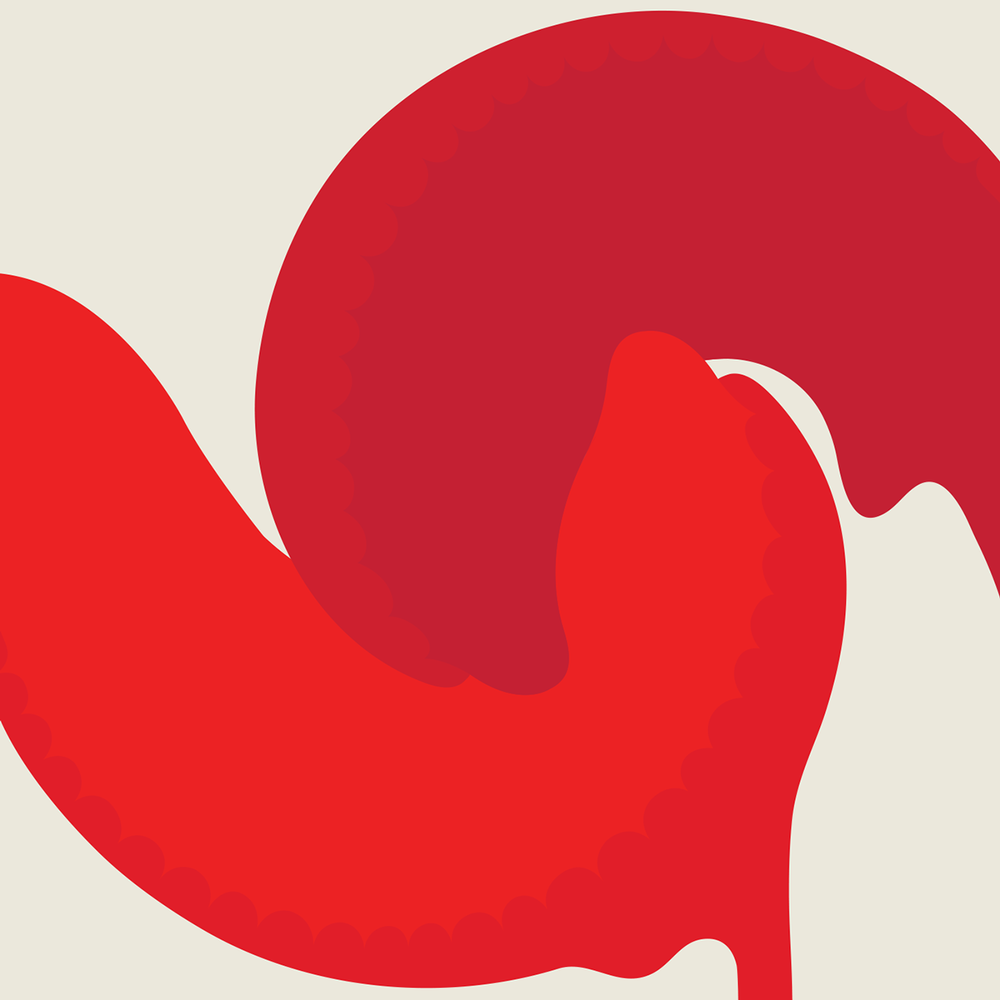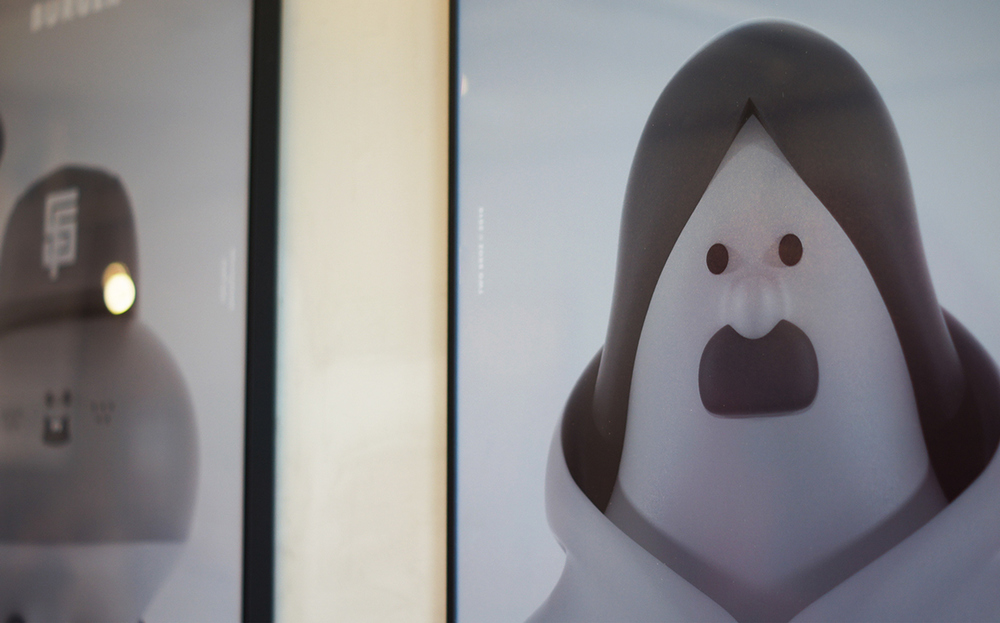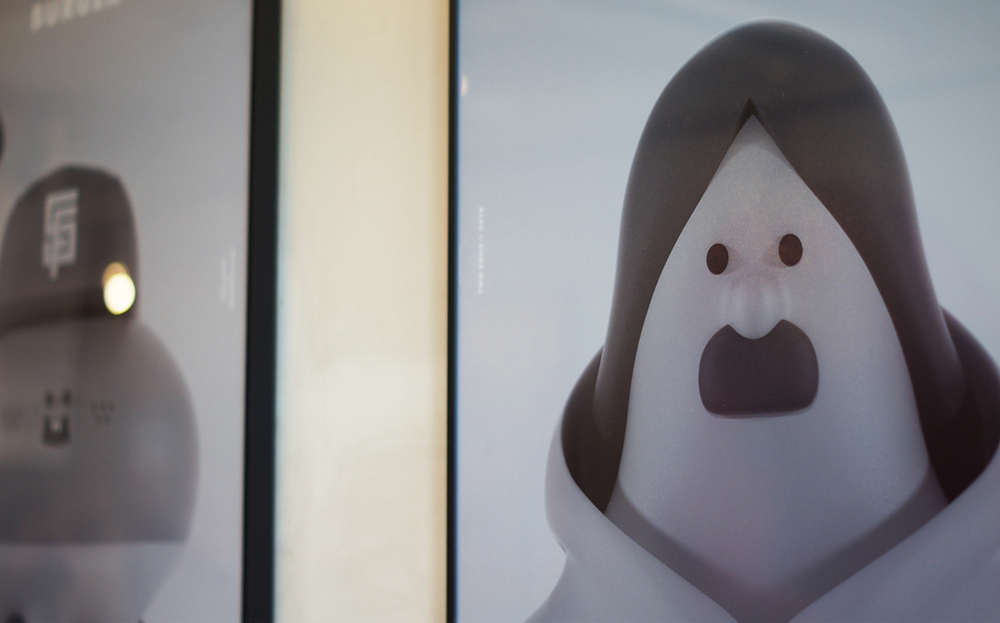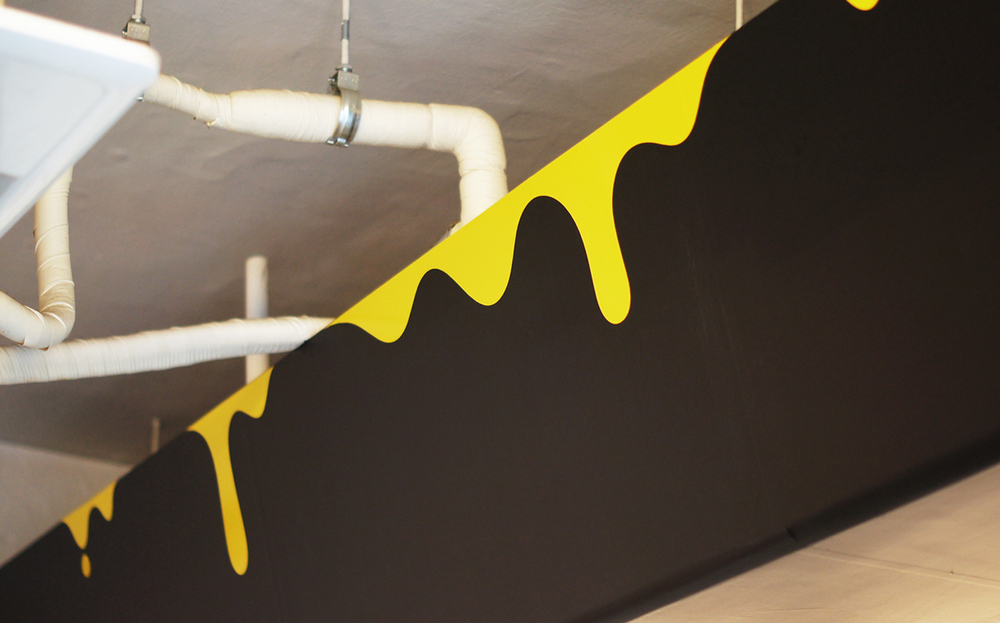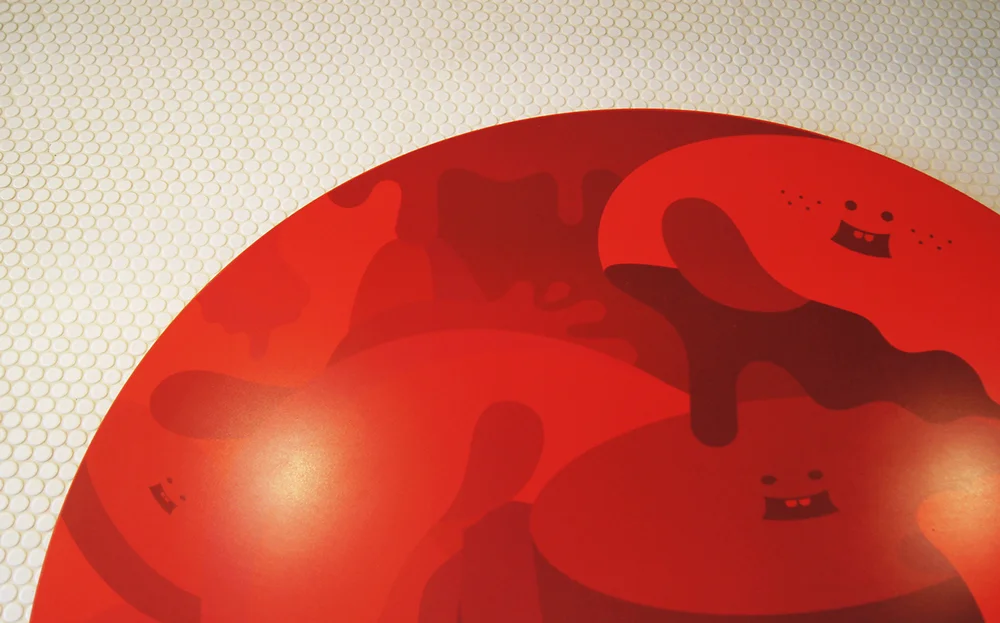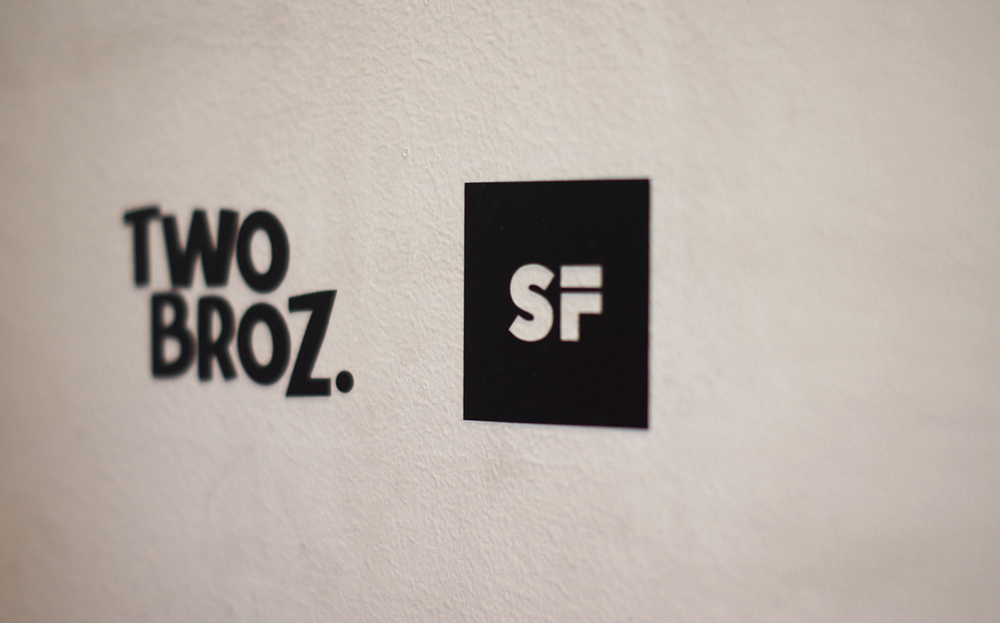KENZO release 2015 spring/summer campaign
By Alyss Bowen
Parisian fashion house KENZO joins forces with the artists from Toilet Paper Magazine on their fourth collaboration for their spring/summer 2015 ultramodern advertising campaign.




Released in three chapters, Toilet Paper created a cityscape scene with a nod to the future through over-saturated vibrant colours and geometric designs.
Captured by the Toilet Paper collective, photographer Pierpaolo Ferrari, artist Maurizio Cattelan and art director Micol Talso. The campaign lends inspiration from the bright and futuristic, showing an optimistic paradise where the models run riot.
The first chapter shows the two ‘hero’, models Mona Matsuoka and Qing He, in their modern, concrete jungle. The simplest of the three chapters we are able to see the real essence of KENZO, with the new collection showcased effortlessly.
The second chapter portrays a magical, mysterious playground. The two heroes stomp through the high-tech city, with their giant like limbs, grabbing buildings and asteroids and imitating puppet shows with KENZO accessories.
The third and final chapter is based upon a child’s fantasy. Toilet Papercreated a 3D origami world in which the KENZO kids play with dinosaurs, skate on planets and explore the waters of a secret island.
The spring/summer campaign is instantly recognizable as a KENZOadvertisement. The consistently modern brand reflects both the bright and the future through their collaboration with Toilet Paper.
It sits perfectly in between being a piece of fashion advertisement, and artist reflection and showcases their men’s, women’s and children’s spring/summer collection in an animated dream.
Curating the New Generation: Introducing Jupiter Woods Gallery
Neatly tucked into a suburb of Southwark a short walk away from Goldsmiths University...
Neatly tucked into a suburb of Southwark a short walk away from Goldsmiths University is Jupiter Woods, an upcoming gallery established by six diverse individuals with backgrounds in curating. ROOMS met with Lucy Lopez and Carolina Ongaro, two of the ladies behind the gallery to discuss the complexities of setting up an exhibition space, and what the project is all about.






How did you all meet, and what inspired you to start Jupiter Woods?
Lucy: We met through studying Curating at Goldsmiths University. I think we were all interested in starting a space that could work in a different way to already existing models. In this way it is something of a testing ground. We host artists for residences and try work with them for a long period, though our resources are limited – we are interested in supporting their research, and often work with younger or emerging artists, both local and international.
Carolina: We were interested in establishing a platform where we could all do things at the same level, the six curators with the artist. It’s a learning process for us – we learn from each other and it’s all a part of our development as curators. It’s about being really close to someone’s practise and developing something together, creating horizontality.
What are some of the challenges you have faced establishing your own exhibition space?
Lucy: I think the thing we’ve had to figure out the most is working with six people (six curators) there are so many challenges within that, but so far, it seems like it works. We have regular meetings and we talk a lot, but it’s a full time thing – we are constantly talking to keep it going.
Carolina: We all also work elsewhere and study, so it's a lot to balance.
Lucy: We wanted to see where this could go and what shape it would take, exploring how we can work together in different ways. It’s an ongoing process – a learning curve.
Your most recent exhibition was entitled Proxyah (V2) by Viktor Timofeev; what was the exhibition about, and how did you become involved with the artist?
Lucy: Viktor was our first resident artist when we opened, and he was there from the start helping us to build the space – the show was quite close to all of our hearts because of that. This was its second iteration – Viktor had a show in Riga which was called ‘Proxyah’ hence why this is version 2.
Carolina: Viktor works a lot with ideas of Utopia and Dystopia, thinking about different possible worlds and realities we can live in. He decided to try out making a video game where the visitor could interact with the work, experiencing where all his ideas came from. The video game involves a room where you sometimes have control on the movements of your proxy, and at other times, do not have any agency. Your proxy within the game is a snake, hence where the title comes from – the objective is to try and reach the light at the end of the room, which could be seen as hope, but of course, obstacles get in your way. Through your movements and the energy spent within these spaces, you accumulate a score overall. The algorithms from that build a city, a structure out of your own energy. It is surely a reference to the system we live in, how we all use our own energy to make everything develop and move.
Lucy: When playing the game, it can sometimes seem counterintuitive. It feels like the opposite of what you would expect from a video game, which usually involves moving forward and achieving things with a definite end. It is so complex; I think it is a way of illustrating the different dimensions in which we exist, and their conflicting outcomes.
What does your residency involve, and how do you choose the artists to take part?
Lucy: It is really tied in with what we want Jupiter Woods to be; the building itself is a house, and actually serves as a home to one of us. We wanted to keep up the idea of hosting people – we extend invitations to artists and offer them a space to live and work. We have Harry Sanderson coming in a couple of days – he is going to be the next artist in residency.
Carolina: The residency is a way for us to keep in daily conversations with the artists, creating dialogues and breaking down barriers that can sometimes exist between gallerist and artist – it feels a lot more natural.
What have you enjoyed most about establishing Jupiter Woods?
Carolina: Well, I’m not from here - I moved to London a year and a half ago. It has been a beautiful experience being in another city and actually being able to create something with the help of friends, people I really like. We are all at the same level, living in London and having to face the challenges of the city and the art world. Jupiter Woods has been a way for us to network and create something together. At the same time, it's so exciting to see how you can put yourself in dialogue with other spaces - other small realities - and help each other a lot.
Lucy: So many opportunities have come out of the project, including invitations to guest curate shows elsewhere.
What other exhibitions have you got lined up?
Carolina: ‘Proxyah (V2)’ closed on the 7th, so from the 14th February until 1st March we have the exhibition IT IS MY DIAMOND NOW with artists Alexander Kellogg and Nick Fusaro. In March, April and May, we will have three group shows, each curated by one of us; Cory Scozzari, one of the other founding members, is curating a show in March. I invite you to have a look at our website for upcoming shows and updates on our program.
14th February - 1st March
IT IS MY DIAMOND NOW
Alexander Kellogg and Nick Fusaro
Preview 14th February 6-8pm
XIMON LEE : Winner of the H&M Design Award
Recent Parsons graduate Ximon Lee, real name Simon Dongxing Lee, winner of this year’s H&M Design Award is a promising new design talent - and a name to familiarise yourself with in 2015.


The 24-year-old New York based designer that grew up in Hong Kong, China, made history at the end of last month at Stockholm’s annual fashion week as he became the first U.S, and first menswear designer to win the prestigious Design Award, chosen from 400 applicants by an international jury in London.
In a statement the young designer said: "The H&M Award means so much to me at the beginning of my career - I cannot imagine how I'd start my own label without it.” H&M have previously collaborated with international fashion houses including Alexander Wang, Maison Martin Margiela and Isabel Marant.
Pushing the boundaries of menswear with his big cuts, architectural shapes and denim textiles, Lee had previously been noted as one of the New York designers to watch after winning Parsons Menswear Designer of the Year award in 2014. His graduation collection explored the contrast between synthetic and organic textures, inspired by the documentary titled “Children of Leningradsky”.
“Oversized, ill-fitted and layered clothes on these orphans are keys to survive in cold Russian winter. However, the unexpected mixture of materials and the contrast between synthetic and organic textures from these found clothes are pieces of art and love.” Lee said on the collection.
The designer is now concentrating on launching his own menswear label. He takes home the €50,000 prize fund, and gains a period of mentorship which will offer an opportunity to develop select pieces from his line for sale globally at H&M beginning October of this year.
BRIAN CALVIN: The Physiognomy of Comfortable Lethargy
As the decade of “status updates” and “selfies” passes in the name of social-media’s ebullient narcissism, Brian Calvin’s works accentuate the perturbing boredom of a population affected by endemic self-awareness.
Born and raised in California, Calvin is a master of mischievous “pausing-as-an-activity” portraits, his work becoming synonymous with the sun-drenched sands and relaxed lifestyle of Los Angeles. Hyper-exposed, bleary-eyed youths with glossy lips and crooked teeth pose for an unseen observer against the backdrop of what Calvin describes as “generalized glimpses of the California coast”.
Mastering a unique proficiency of composition in his portraits, Calvin assembles scenery, features, and expressions to loiter indecisively between states of abstraction and figuration. Thus, the characters of Calvin’s colourful eye-candy portraiture manage to all but evade narrative traits. What remains, captures centre stage nameless, story-less characters with provocatively parted lips and “dents du Bonheur”, suggestive of playful lasciviousness. Conjuring up images of Brigitte Bardot and Sophia Loren there is something profound and subtly charged about the spirit of melancholia, which permeates the seemingly vain and conceited faces of Calvin’s portraits. Simultaneously an intense sense of innocence and an aura of present-mindedness coat the colourful imagery.
Despite the chronicler’s manifestation in modernist figurative painting, which some might be excused for considering a cynical distortion in the name of narrative content, Calvin’s quietly disconcerting style has a more sincere quality. Rather than a caricature of form and figure, Calvin’s work muses the conundrum of a society, in which, consciously or not, we endeavour to influence the perceptions of others. Whether “stoic or stoned” Calvin’s aloof and emotionally cool characters imply a rampant monotony of selfie-culture and the increasing lack of human relations within it. Yet Calvin’s choice of colour and form covers the gloomy message of his subjects in an icing so delicious, the spectator is at risk of missing it entirely. And despite little or no sign of communication in his portraits, the close-ups display a sense of relaxed comfort within their environment and the unidentified spectator. Despite the grip of a “selfie-self-love-culture”, there is something decidedly comforting, uplifting even, about Brian Calvin’s enchantingly self-aware young subjects.
“The Grammar of the Image”: An Interview With ArtEZ Graduate KARIN VLUG
With three locations across the Netherlands and an enrolment of over 3,000 students, ArtEZ Art Institute offers...
With three locations across the Netherlands and an enrolment of over 3,000 students, ArtEZ Art Institute offers both Bachelor’s and Master’s degrees in myriad creative platforms. Spanning visual art, architecture, fashion, design, music, theatre, creative writing, dance, and art education, ArtEZ’s curriculum caters to all creative minds and seeks to foster up-and-coming individuals. To find out more about this exciting institution, we chatted with fashion designer Karin Vlug, a recent graduate of ArtEZ and winner of last year’s Frans Molenaar Couture Award.
How did you initially become involved with fashion design?
Becoming involved in Fashion Design was very natural to me. Dressing myself every morning, trying on my mother’s wardrobe and discussing it, knitting with my granny, altering old clothes and sewing my first designs when I was 12 years old. It was all part of the process towards becoming a fashion designer.
Do any other artistic experiences or practices comprise your background?
I grew up in a very cultural family. We went to museums, the theatre and dance performances.
But I think the biggest influence was that I learned to look around me at a very young age. Counting stairs, comparing colours, looking at architecture, describing what I saw, counting/repetition… Then, when I went to ArtEZ it was the first and most important subject: “The grammar of the image”.
What does your design process typically entail?
It always starts with a simple observation of my daily surroundings, which/something I find very interesting. For example, the idea of my last collection was inspired by the IKEA concept.
After shopping at Ikea, you return home with a couple of flat boxes. At home you put these 2d parts together with a few simple actions. Everything fits perfectly, and after that one can change, vary and expand to one’s heart’s content.
My design process is very much based on the construction of the garment. Form will follow. Next to construction, I have a very big love for textiles. I create my own textiles with the use of materials that are mostly seen as invaluable.
In 2014, you won the Frans Molenaar Couture Award for “One square fits all” (congratulations!). What inspired this project?
My collection “One square fits all” consists of 90° angles only, such as the square and the T-form.
Sewing is not necessary, my pattern pieces contain tunnels and incisions, hence construction of the garment is possible by stringing together with a ribbon. For pants, only two pieces are required. For a shirt, dress, skirt, sweater or coat you will need one or more pieces. A complete wardrobe consists of ten pattern pieces.
The placement of incisions and tunnels, and the materials I developed, are the essence of the design.
I create couture without cutting or sewing; it is my vision of a new, accessible, made to measure, couture. Apart from a little silk and mohair, I use materials which are usually perceived as non-luxurious, e.g. different types of synthetic fabrics and anti-slip mats. These materials provide endless possibilities because of their melt-able nature. With the application of heat the materials are fused into a new one (and this is also the method by which tunnels and incisions are created).
In the near future my designs will be downloadable ‘made-to-measure’, and my pattern pieces, with the programmed incisions and tunnels, will be easily fused by means of laser or other heat source by or for the wearer.
Has winning such an award brought about any exciting opportunities?
Yes, very exciting ones! It has brought me exposure in magazines and expositions. But the most exciting opportunity is that since the Award I have been working for Professor Jose Theunissen. With a group of people from different universities and companies we are thinking about the future of fashion production within the next 5 years.
In 2014, you received a Bachelor of Arts Degree in Fashion Design from the ArtEZ Academy of Art and, currently, you are a blogger for ArtEZ & Innovatie. What brought you to ArtEZ?
ArtEZ has always been the only school for me. The program focuses on a high quality of design and concept for four full years. I wanted to become a really good designer. Learning about business is of course also a very important aspect, but I figured I could do it later; first fully focus on developing my creativity.
What did your academic career at ArtEZ entail?
The first year at the academy is very experimental. They really try to open you up and be very experimental – a skirt does not have to start in the waist, and ‘what is a skirt actually?’ They hardly give you any practical skills. This way you really develop your creativity since you have to figure out everything yourself. The concept is very important.
The second year is more practical. You start to look at different brands and get more technical skills. Still concept and experiment are very important, but you slowly start thinking about translation towards clothing.
In the third year you develop Collection Arnhem – a collection created by all the third year students – from concept to show and production. So valuable! Everyone starts at the same point in the process, thinking about the concept. Later on each student will work on the part he or she prefers, for example print, fabric, or production.
How has your experience with the school affected your practice?
My experience at the academy has affected everything in daily practice. The most valuable thing that I learned was how to look around me, describe it and translate into a fashion design concept.
And, lastly, what can we expect from you in the future? Any exciting plans?
In the near future you can expect a new collection from me. It will be a more and more developed version of “One square fits all”. I will present it at the Frans Molenaar Couture Award 2015. I also have a very exciting event coming up that I am organising myself :) in June 2015 in Amsterdam!
Eventually I would love to have my own research company where I will work with different types of disciplines, chemists, product designers, fashion designers, architects, etc. and where we all think about innovation within the construction of clothing. We will develop collections under Karin Vlug, but I can also imagine designing special pieces for a big fashion house. To be continued. :)
Modern Nostalgia: Franck Bohbot’s Time
“ . . . Caught between the long seediness of its past, fading like the ice cream pasteboards, and perhaps a glimpse of the American future, the privatized, sanitized austerity of a modern melancholia.”
Travelling Photography
. . . Caught between the long seediness of its past, fading like the ice cream pasteboards, and perhaps a glimpse of the American future, the privatized, sanitized austerity of a modern melancholia.”
While this poetic description is specific to Last Stop - Coney Island, a series by contemporary photographer Franck Bohbot, it also aptly epitomises the entirety of his artistic focus. Born in France and based in Brooklyn, Bohbot transforms documented reality through his own whimsical and timeless interpretations. Capturing the diverse relationships between individuals and their environments, Bohbot tends to focus on metropolitan landscapes and public spaces, creating pieces that are aesthetically retro yet modern in subject matter.
While some of the content is undeniably contemporary – including new skyscrapers and modern street scenes – Bohbot magically manages to make even the most up-to-date subject matter appear sentimentally shot and shrouded in nostalgia. Washed in subdued pastels and evocative of vintage photographs, Bohbot seldom conveys the inevitably gritty nature of modern-day urbanization and opts instead for a more wistful perspective.
Paying particular attention to the architecture within urban settings, the backdrops of his photographs span myriad locations; everlasting carnivals, still-standing Googie façades, glowing neon marquees, and the intricate interiors of hotels, museums, and cinemas comprise just a fraction of his distinctive yet diverse focus.
Forgoing natural landscapes for manmade scenes and sites, Bohbot’s body of work becomes a modern study of the city and its inhabitants. With an evocative focus on aesthetic agelessness and an obvious penchant for the past, his photography celebrates modernity through captivating composition and, ultimately, a timeless paradox.


The art of filmmaking and graphic design with GRIFF
I'm a UK based artist and I illustrate, animate and direct commercials, music vids and short films.
The work used to fall into either abstract artier animation, charming/funny character animation, or harrowing live action drama. Recently they have begun to overlap, with random animation onto of live action/photography, with moments of humour – it’s just taken me ages to realise they don't have to be mutually exclusive.
I think creativity only really comes about through adversity.
Struggles – biblical or political or social – always makes for good art, whereas I can't imagine anything more boring than something painted by Mr Happy on holiday in Niceland.
Adversity doesn't have to relate solely to the subject matter though, it can instead be the circumstances under which it’s made. Give someone infinite resources to make anything they want and they'll create something flaccid, give someone a tiny budget, very little time or a nightmare of a task and the chances are they'll (have to) come up with something inspired.
That’s not to suggest that clients should pay less and reduce schedules (!) but it is beneficial to the artists creativity even if they have to self-impose restrictions, if only to encourage focus. It's no good to blame a lack of money or a tight brief, they should be the things to inspire the solution.
GRIFF , ANIMATION, LIVE ACTION
Songwriter Ralegh Long on the meaning of music #interview
WHEN & WHY
I started very young, aged 4 or 5, by strumming a guitar without fretting any chords and singing nonsense lyrics. I used to record on a boom box, and make tapes. It's a slow evolution.
MUSICAL MEMORIES
Jamming with my band from the age of 15 onwards in the summertime. Just setting up at my house, annoying the parents, getting lost in music. We wrote hundreds of songs and filed them away. Just pure curiosity and experimentation. I'm definitely pulling a few of those songs out in the future. We still play together.
FIRST SONG YOU LEARNED
Sara by Bob Dylan.
I ADMIRE
Artists I admire include Mark Eitzel, who changed my idea of what live music could be when I saw him play when I was about 18. The Innocence Mission, for their lyrical grace and beauty. Darren Hayman, who has been kind and taught me a lot.
MY INSTRUMENTS
My first instrument was a classical guitar. It had a new guitar smell and I remember being very excited when I got it, and that it was a lot bigger than me. Nowadays I play a beaten up Shaftesbury guitar who were this crazy copy make in the 60s and 70s. They've got microphonic pickups so they sound really harsh. I'm also quite partial to Nashville tuning, which is where you string an acoustic 6 string with just the top 6 strings of a 12 string set. It makes the guitar really high and it's useful when I'm playing live as it leaves space for Ed Ellis' Piano and Jack Hayter's Pedal steel.
STAYING INSPIRED
I tend to like things filled with light and a sense of grace. I like Sisley, and Debussy, I was really into Cy Twombly when I was younger. Musically I normally look for clarity, and distinctness of vision. I love Joni Mitchell, Bill Fay, American Music Club, lots of pretty emotionally difficult stuff. But I also love '80s college rock like The Wipers, The Reivers, The Dbs. Umbrella by The Innocence Mission is on heavy rotation at the moment. They are band from Pennsylvania who started in the 80s and are still going. Moving from a Cocteau Twins dream-pop sound to a simple folk vibe through the years. I love them.
I KEEP CREATIVE…
By letting the songs come to me rather than going looking for them. I find that two or three days without playing will normally result in a song or two when I start again.
IN THE STUDIO
For the first two E.Ps I self-produced. For this record I worked with Michael Page at The Combination Of. Mike's a producer in the old sense and it was a real experience making this record with him. He's fiercely intelligent. I think we think about music in contrasting ways and that was a fascinating thing to explore. We went into Soup Studios in East London, which is a great analogue studio. We cut the basic tracks in two days and then went back to The Combination Of to work on overdubs. For me on a day to day basis being in the studio means writing. Songs tend to come fairly fully formed, in one go at the piano. Vocals, melody, chords and lyrics. From there I will tinker and amend, revisiting songs until I feel there's a body of work emerging. It's a very circular process.
MUSIC MEANS…
It means a lot. I feel like I'm always thinking about it. It's an art-form, it's a pre-occupation, it's a spiritual practice, it's what I do for fun.
Ralegh Long
BUSDRIVER: A jazzy ride with the LA Rapper and Producer
Regan Farquhar aka Busdriver, LA
WHY & WHEN
Rap overtook me right about when I turned 13. That was also the same year and began piano lessons.
My teacher soon after, refused to teach me do to my lack of focus.
FIRST TUNE
I don't know, but the first vocalesce jazz song I learned was 'Cloudburst' by Jon Hendricks
I ADMIRE
Brian Eno, D'Angelo, Sly from Sly and the Family Stones. In particular, Sly getting that huge settlement in unpaid royalties recently should be a personal victory for all makers of intellectual property. It's a huge deal because you get a sense of how much poverty can stifle the lives of even our most coveted of innovators.
MY INSTRUMENTS
The voice. This has been my only real instrument. When I was in the band Physical Forms, I played the Q-chord and photo-sensitive sound governors build into welding gloves. Aside from that I use a few Roland drum machines. And the computer. And the fingers.
MUSICAL MEMORIES
Music is mainly something I experience and am swallowed whole by. So getting to actively spend time creating it for quite a while is an unusual privilege.
There were key moments when my appreciation became performative and when my own music became the response to music that I would or would not hear. The Goodlife was my earliest experience with this dynamic. There was a danger and confidence to the styles and personal outlooks in that place that I still can't shake. Something changed in me over the few months that I attended that open mike and got acquainted with the Lifers. It awakened something and compelled me to make make make.
A good deal of my fondest musical memories revolve around improvisation. Rapping with young jazzmen in Leimert Park at 5th Street Dick's comes to mind when I think of the euphoria in the improvised verse. Also, my years MCing in the Hip-hop and Drum'n'Bass room of LAs Concrete Jungle with Mikah-9 Daddy Kev, Hive and eDIT are some of my most favoured. I learned the dangers of dark rooms there, and really fell in love with rapping's possibilities in an unabashed way. Even though these memories all take place in venues freshly screamed into being, all my time in these holes felt personal. Like the community aspect locked all the moving parts into place.
READY, STEADY… STAGE!
I get nervous when I have to freestyle nowadays. It’s a volatile practice. My mind can barely hack it.
LAST WORDS
The powerful are looking for a particular kind of surrender from us. Whether you know it or not, you've already agreed to the terms of either or. Find that perfect hair and demystify its wiles. Or don't.
Illustrating the human condition: BORIS PELCER

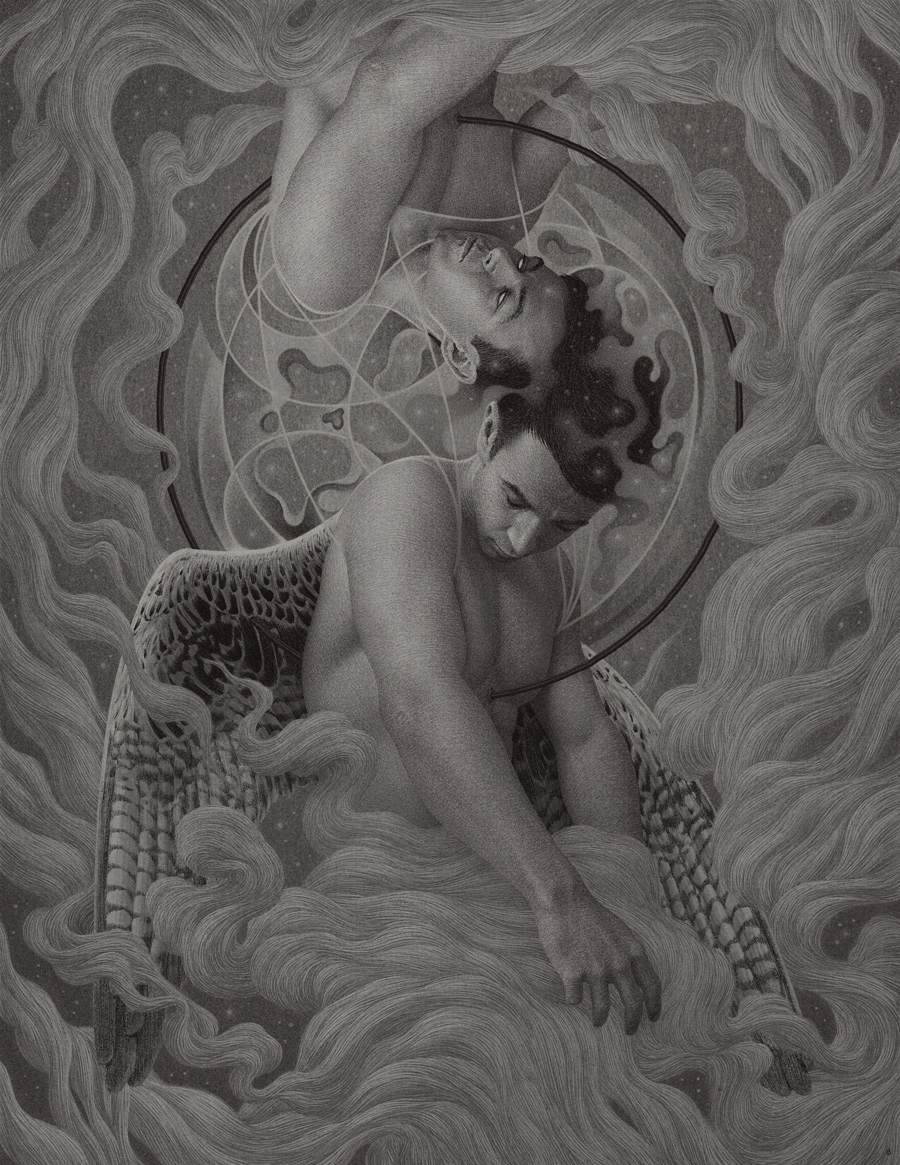

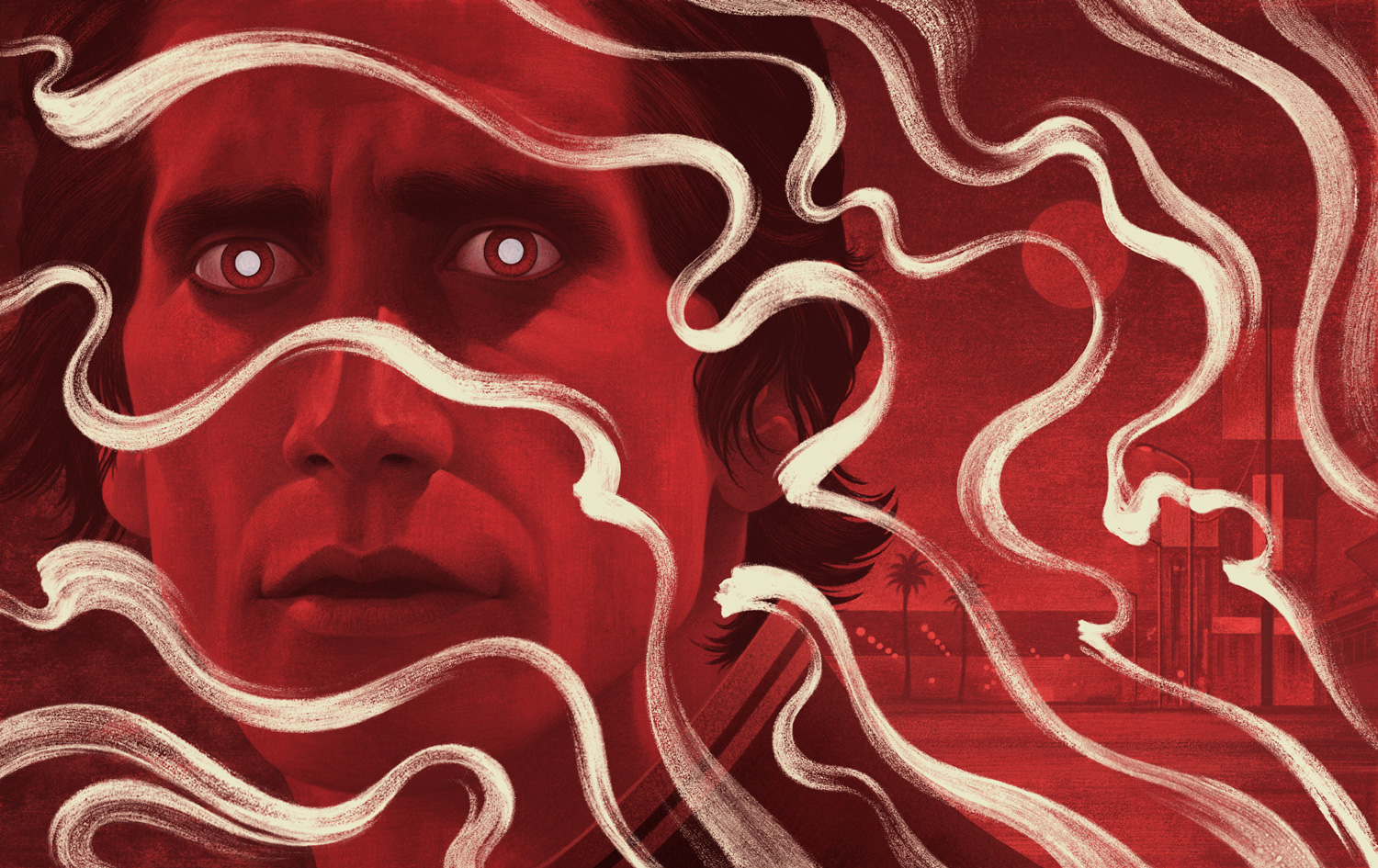

Illustrating the human condition: Boris Pelcer
The first step of creating a body of work is the formation of an idea behind the work. That includes researching, reading, self-reflecting and writing about a particular concept. If the work is for a client the main idea is given to me by the client. If the work is personal it requires a good deal of self-reflection, which can take time. I try not to define my concept to the degree which restricts my work from evolving into something unexpected. Once the overall idea is set, then I start collecting reference, sketching compositions and thinking about medium and colour use. As far as medium is concerned, I prefer graphite and acrylic. Such mediums often produce unexpected textures and compositional elements, which in my personal opinion improves the overall mood of my work.
Creativity is quite important to me. It is one of the main ways that I contemplate and attempt to better understand the enigmatic aspects of the human psyche and the human condition. Thus, my personal work is a visual record of my thoughts, moods and philosophical contemplations.
Boris Pelcer , Milwaukee, WI, USA
Colour block: What’s trending for SS15?
1970s revival: Retro tones - warm oranges, reds, yellows and greens.
1970s revival: Retro tones - warm oranges, reds, yellows and greens.
From flared trousers, crochet dresses and beaded detailing, to clashing florals, sheer kaftans, paisley, ethereal, and Balinese flower-inspired print blouses - seventies fashion throwbacks truly dominated the SS15 catwalk. Leading the seventies playback, Tommy Hilfiger bought a nostalgia of Woodstock and Coachella as models walked the runway to The Rolling Stones' “Sympathy for the Devil” and Jimi Hendrix's "All Along The Watchtower” down a path lined with psychedelic flowers. Prada brought back the platform clog, whilst Henry Holland paid tribute to the groupie girl with bold contrasting prints and metallics.
Also See: Emilio Pucci Printed Silk Crepe de Chine Wide-leg Pants.
Florals
“Florals? For Spring? Ground-breaking.” A predictable trend for spring but back for SS15 with 3D floral embellishments leading the way. The catwalk saw an explosion of exaggerated funkadelic florals from vivid cartoonish to retro styles, with ultra-bright floral bouquet prints sported by Chanel, Marni and Michael Kors paid as a homage to summer. Abstract graphic flower print bags are noted as the key trend piece of the season, as seen at the Valentino, Fendi, and Topshop Unique shows.
Victorian Whites: Nudes and neutrals
White is the colour of SS15. Fine white embroidered lace designs rich with artisan workmanship from Erderm, Valentino, Robert Cavalli, Louis Vuitton, Moncler Gamme Rouge and Joseph, boast the most delicate cutwork designs and bring us back to the style of Victoriana dressing.
Cleansing creams and white fuss free silhouettes were also showcased at Victoria Beckham, Jill Stuart, Ralph Lauren, Chloe, Alexander Wang and Chanel. Expect to see head-to-toe white outfits this spring.
Rich Blue Denims
As fashion editor of Vogue Francesca Burns notes: “more is more when it comes to spring/summer denim. Don’t be afraid of layering!” We see tailoring, military jackets, decorative detail and patchwork denim trending from all the fashion power houses, including Burberry, Gucci, Etro, Stella McCartney, Tommy Hilfiger, Dolce & Gabbana, Sonia Rykiel, Roberto Cavalli, and Chloe. It’s all about double, or even triple denim layering this spring.
Pastel Palette
An essence of elegance and femininity is brought to SS15 through the pastel summer hues of lilacs and lavender as showcased by Balenciaga, Missoni, Burberry, D Squared, Cavalli and Alberta Ferretti, which fully embody classic spring tones.
Green & Blue - Menswear
From aqua, vintage greens, and storm blues - the British pastoral and coastal shades of blue and green are the hues of menswear SS15. Combined in various collections including Krisvanassche, Y-3, Michael Kors, Baartmans & Siegel, Pringle of Scotland, Gieves & Hawkes and Hackett, the colours are the most prevalent of the season.
Happy Designs by SUPERFICTION
Happy Designs by SUPERFICTION
We are a culture design studio based in Seoul, Korea with various members from different backgrounds. From brand design to illustration, motion graphic, product design and marketing, we’re a bunch of creative minds joined into one group.
We all come from different regions and environments and this helps a lot to bring new ideas and perspective into all our ongoing collaborative projects globally.
Most of our members have a design background. From college to actual field work, we all have been doing ‘art’ in our own way and believe that how we grew up (the environment, the people, the amount of time spent on creativity etc) had a big impact on our work. With these experiences we try to build a strong story in our work. We believe good story telling is a good base for strong content and the best way to connect with all the people who appreciates our work.
We believe art and creativity is, in the end, all about playing, having fun!
Playing with design, culture, art and life style, we do these to better the quality of our lives and have fun. This is art and creativity to us.
Behind the brand – Bimba Y Lola
Spanish sister’s Maria and Uxia Dominguez have a thing for dogs. So much so that they decided to honor their two greyhounds, Bimba and Lola, and name their fashion label after them
Bimba Y Lola was founded in 2005 in the North of Spain. The modern label launched 90 stores in its first five years of opening and has been rapidly growing ever since. Their greyhound logo expresses the brands dynamic nature and elegance.
The two sisters began their fashion journey working with their father at Sociedad Textil Lonia, which he co-founded. Venturing out, they created their own fashion brand and by 2006 had opened their first shop in Bilbao, Spain.
With their father co-founding a company that distributes clothing and accessories it is obvious where they get their inspiration. With 87 stores in Spain, Bimba Y Lola is a household name; they’ve even branched out to England.
The brand sells apparel and accessories, which evoke the spirit and playfulness of Spain. They take inspiration from nature, film, art and even family, proving that they are a close-knit bunch.
Their affordable, feminine pieces are classic with a hint of subtle modernity, and are aimed at women between the ages of 25-45. Picture classic silhouettes, combined with ribbed fabric, leather or a bold print.
With a young design team, everyone is under the age of 30, it’s easy to see that they are designing for women who want to step out of the typical Spanish Zara zone.
The latest Spring/Summer 2015 collection, ‘This is Tropicana’ uses flashes of neon colours to brighten up statement twin sets. This combined with staple sheer black pieces proves the pieces are not only wearable, but also fashionable.
Alternative Film Screening Venues in London
London is a great place to find alternative and unique events to open your mind and excite you.
London is a great place to find alternative and unique events to open your mind and excite you. The film circuit is ever expanding, making a large market for alternative viewing experiences. Here are a few to definitely check out:
The Horse Hospital
Located just outside Russell Square station, The Horse Hospital is a space for ‘underground and avant-garde media’. The progressive arts venue focuses on many disciplines such as art, film, fashion, literature and music to create a collaborative interactive space for underground artists. The only of its type in the UK, it showcases rare films and submissions in its artist led environment. The venue does not exist for financial gain and because of this the building is currently under threat as the underground community is priced out of the city.
Exploding Cinema
This venue is a platform for experimental filmmakers hoping to create DIY cinema, against state funding. It has a common ownership style, with all work copyright free and non-profit. Anyone can contribute. They have shown over 1000 filmmakers work, across different locations to diverse audience. Shunning the elitist ways, they encourage you to get a projector and show your own films, as well as offering the chance to screen them for you at as low a price as possible. This is a revolutionary path for film.
Secret Cinema
This immersive cinema experience, created by Fabien Riggall, showed their first screening in 2007, there has since been a large range of live cinema experiences in different locations throughout London. They are all themed to fit the film with dress codes and items you’re suggested to bring, some including performances accompanying the film. Before the screening, you can wonder around this alternate reality that they have created and interact with characters and actors, who will lead you around and introduce you to parts of the event you may not have explored. The incorporation of live interactive performance is what makes Secret Cinema unique and exciting. The large productions never seem to disappoint with the events always being spectacular and worth the money.
Eye Respect: The Best of British Eyewear
London based, British eyewear manufacturer Eye Respect, that prides itself on skilled artisan, handcrafting the finest glasses individually for up to 16 hours, has seriously established its global presence over the past year.
From collaborating with the prestigious London designer Oliver Spencer and exhibiting in the “Designer Showroom” at LC:M, to participating in the ‘Capsule’ fashion trade show in Paris, to the Eye Respect x Il Bussetto SS15 collaboration - which was noted as the meeting of the best in Italy and Britain - Eye Respect has gained a year of acclaim from the International fashion press.






The brand believes and leads in its “Respect for Craft” campaigns around the globe. Its latest SS15 campaign “We Are Eye Respect” delves into the issues of real hand crafted eyewear and shares the experience with its customer base. Their “Respect for Craft” ethos considers frame proportions, angles and curvature sometimes trial and error, but always precise and never finished until the result is flawless.
Handcrafted in Italy of the finest acetate, the SS15 collection is built upon the 1950s round-rimmed aesthetic. From the Alex, the timeless classic wayfarer silhouette, to the EJ, the bold and contemporary, the Shaun, rounder in lens and bridge than the EJ, yet identical in density and feel, to the DC, the ultimate heritage silhouette - the SS15 collection features both optical frames and stylish two toned sunglasses, boasting traditional to contemporary designs with a strong heritage influence.
All frames come complete with an Eye Respect fold-away carry-case.
“The best of British eyewear that is understated yet like in all things a creative world leader.”
Lightning Boy Studio : Animation made in Montreal
Our team at Lightning Boy Studio is made of three people : David Forest, Carl Beauchemin and Thomas Chrétien.
We are three friends who met when we were studying 3D animation in Montreal city. We quickly realized that we would make a great team and since then our goal has been to work with each other and make the best movies possible. Le Gouffre is the first official project we did together.
When developing projects together, our biggest focus is the story. A good story resonates with people, and we want to share emotions and feelings with the world when we make a movie. Of course, pretty images, good acting and good animation are all important when making an animated film, but everything will be meaningless if the core of the story isn't good. That's why we spent 6 months refining our story before starting to work full time on Le Gouffre.
Art can be many things, and can be used to express almost anything. But the art that resonates the most with us is the art of storytelling. How to use both sound and image to communicate ideas with people that might not even speak the same language as you. Storytelling is among the oldest art forms, it is part of human nature to tell stories, and it is what pushes us at Lightning Boy Studio to do art.
Carl, Thomas and David
Introducing French Touch 3.0: French Kiwi Juice
Founded in 2012, the Roche Musique label generates a signature sound that is futuristically classy and – better still – unmistakably French. Found amongst the Roche Musique alumni, which is one heavy-hitting bunch including artists such as Kartell, Cézaire and Cherokee, is 24-year-old resident FKJ. His criminally smooth sound, sophistically transcending the limitations set by traditional music making, is totally addictive (and a personal favourite). We had a chat with one-to-watch FKJ about music, Paris and all things groovy.
Tell me a little bit about yourself?
My interest in music started early on. I would visit my uncle’s studio in Sydney and even though I didn’t know how to use any of the equipment I was completely hooked. I would even sleep there. My earliest musical encounter was listening to my father’s records from the 70s and 80s – you know, Police, Rolling Stones, Pink Floyd... that kind of thing. Later my friends and I would listen to Hip-Hop on the radio. I was really into that for a while. I always loved music and sure, it was a dream to be able to make music for a living, but that dream was big. When I moved to Paris three years ago I had a job letting sound equipment for photo shoots and commercials. I didn’t like the job much but I got to use the equipment and was able to do some recordings. There wasn’t really a “defining moment”. I was doing odd-job gigs one moment and suddenly I was making music!
Tell me about about the way you work?
For the last two months I’ve had a real studio, which has made an enormous difference. Before I was working in my bedroom and because of my roommates I had to stop at 10pm. Now I can go on until 5am, if I’m feeling it. I share the studio with two other artists from the label – Kartell and Darius. Whereas especially Kartell keeps quite a regular schedule, I work more hardcore hours. During the day I’m out a lot, taking pictures, having lunch with friends, going to art exhibitions and often having a few drinks at night. I live in Paris and I love to get lost in the city – there is always something to do and I manage to find inspiration everywhere! If something hits me, I will record a vocal melody on my iPhone and then go to my “emergency studio” at home, where I have the essentials to compose if I need to. The best songs are the ones in my head – the spontaneous ones. I often find that too much planning makes mediocre music.
What does music mean to you?
For me it is about the music in itself, not the genre or style. Some periods I am deeply into one thing, two months later it’s something else. When you listen to a lot of different things, and listen properly, you begin to understand the style and the different elements proper to each style. You appreciate not only the music, but the context as well. For me the main thing is having fun in the studio – with a stick, a glass, vocals, anything really. If I feel something is missing I will explore that particular cord obsessively until I really know it. I am always discovering and there continues to be stuff to learn. The beauty is that you can learn anything from anyone; the more open you are, the more you can absorb!
And Roche Musique, what’s the story?
I’ve been part of Roche Musique for two years and it is like a little family. The manager, Jean Janin (Cézaire), is one of best friends and we were friends long before either of us got into music. We are eight to ten artists under the label and we all know each other and hang out every week. Sometimes we do tracks together, mixing sounds and playing around with some tunes. The process is interesting because you never know how it will turn out. Despite the similarity in style we all have different tastes and approaches. For example, I recently created a track with Darius and the way we combined our styles to create something distinctive from both our sounds was awesome and it really worked. On the other hand, the first time we tried it didn’t work – it was too planned!
So, to you, what makes Roche Musique stand out?
I don’t know any other label that brings this level of French groove – that uniquely French touch. I really feel like we are the best representatives of French funk. Apart from that, and the environment of course, I also like the visual side of the label, the cover artworks. For someone who has always loved visuals and photography, that means something too. Essentially, it’s a super supportive environment, in which we all share one main goal – it’s all about the groove!
What inspires you?
I am very much influenced by the atmosphere around me. If I were alone in the world, if nobody was around to listen, no doubt my music would be different. That atmospheric inspiration would be missing. But, once that is said, I make music first and foremost for me. There is a lot of pressure on young artists, once their music starts to take off, to conform to what is “expected” of them. Because of the type of music I make I am often associated with the club scene, but personally I don’t really care about fitting a certain scene. When I was younger I was more concerned with these artificial boundaries, trying to “fit in”, but all that really resulted in was fixing limits for my creativity. You have to stay true to yourself and the kind of stuff you enjoy making – even if it transcends borders. That makes your music honest and honesty is vital.
For sure! And finally, what’s the best part of making music?
When my state of mind is right, it’s euphoric. It’s better than any drug, and such a big part of my music. Of course travelling and making gigs is always amazing. Meeting people and performing, having the opportunity to communicate the euphoric state I was in when I created a track is a special feeling. More than anything, I’d like to be able to think of myself as a composer of good atmosphere. That’s it, that’s what it’s all about for me – creating something groovy and having fun while I do it.
Five Indie Releases To Look Forward To In 2015
This year shall see a large number of exciting releases through film. Some of the most highly anticipated are in the Indie film circuit, lined with great casts, intense directors and unusual inspiration.
Freeheld
Directed by Peter Sollett
Based around a short documentary of the same name Julianne Moore and Ellen Page star as Laurel Hester and Stacie Andree. The film follows a lesbian couple as Laurel Hester, a police officer, is diagnosed with terminal lung cancer and petitions against the board so her partner can receive her pension benefits.
The short documentary itself is very moving and an interesting reflection on LGBT rights. With a strong cast, the feature is one to look forward to.
Knights Of Cups
The latest film written and directed by Terrence Malik (Tree of Life) stars Christian Bale as Rick, a slave to the Hollywood system as we follow his search for something real in a life of illusion. Malik’s latest work is bound to be visually enticing with a constant flow of beautiful, changing images.
Premieres Feburary at Berlin International Film Festival
I am Michael
Directed by Justin Kelly
James Franco plays Michael Glatze, a gay activist who renounces his homosexuality and becomes a Christian pastor. I am Michael is based upon New York Times magazine article ‘My Ex-Gay Friend’ by Benoit Denizet-Lewis, interviewing his old friend Glatze, and comparing this change in him. From his work as the co-founder of Young Gay America to him now saying homosexuality is ‘a cage’, the contrast is alarming. Seeing this strange story unravel on screen should cause a stir of emotions.
Miles Ahead
This see’s Don Cheadle’s directorial debut as he stars as Miles Davis in a biographical film about the jazz musicians life. Cheadle’s obvious enthusiasm shows there has been real work put into this, with the film partly funded by an IndieGoGo project, as he wanted to create a social experience for a social musician like Davis. Biographical films always hold a certain risk when you portray someone iconic. However, There are high hopes for Miles Ahead.
Room
Directed by Lenny Abrahamson
Room is based around the bestselling novel from Emma Donoghue, following the story of five-year-old Jack, who’s held captive in a small room with his mother. The idea for this novel came about after hearing about the Josef Fritzl case, which should give you the idea of how psychologically troubling this feature will be. Interestingly from a child’s point of view, there is bound to be an edge of naivety accompanying the narrative, making it even more chilling.
In Contemporary Conversation with ALICE WOODS
With a portfolio that is both aesthetically alluring and rooted heavily in social consciousness, it’s no secret that London-based artist Alice Woods does not shy away from bold materials, messages, and mediums. Hoping to “address our economic knowledge deficit and elucidate the relationships between economic decision making, cultural preferences and political transitions”, Alice uses in-depth research and meticulous metaphors to illustrate contemporary – and often controversial – issues. We chatted with the artist to find out more about her social stance, artistic process, and exciting plans.





Your body of work is clearly very diverse, spanning 3D sculpture, installation, video, and conceptual pieces. What is your artistic background?
My background is actually in music, and before art school I attended a music school for 5 years as part of my secondary education. This was an incredible experience, and one that taught me a lot about working under pressure and how to learn your craft. Although music will always be a massive part of my life, the particular nuances of the type of classical music I was studying are quite narrow and demand near perfection from the performer. In the end I think I turned to art as a sort of antidote to this way of working, and somewhere I could be much freer with my ideas and interpretations.
How did you come to work with so many different mediums?
I think it began right from my first experiences in art education. I was enrolled in the foundation course at Central Saint Martins and there I specialized in ‘Contextual Practice’ which focused on research led enquires. Because of this, the idea always came first and medium was determined by whatever was a natural fit. I have always continued this approach and try to not pigeon hole myself within any particular medium as a way of keeping my thoughts as free as possible, and to ensure I don’t place any preconceived limitations on my practice.
You note that, as an artist, you explore “the implications of financial & economic power structures”. With motifs spanning government surveillance, corruption within the stock market, and the proliferation of technology, this focus is extremely apparent in your work. What sparked this interest?
A desire to understand and reveal the workings of the financial sector was sparked by the onset of the 2008 global financial crisis, and through my experiences of growing up in North East England where the effects of the recession have been felt in full force. Amidst the rise of the Occupy Movement I spent time down at the encampment by St Paul’s and this solidified my interest in the implications of extreme income inequalities and how neoliberal policies filter down to the public whose interests are often in a very different arena from those in Westminster.
Did you explore these themes in your early work, too?
My early work was more concerned with value and worth, and then when the recession hit and Occupy gathered pace, these initial themes started to focus more on the nitty gritty of what we ascribe worth to in Western society and the implications that our particular form of capitalism has on communities and individuals.
While such concepts are rooted heavily in issues related to society as a whole, you also comment on the role of the individual with pieces like Sally (The Watcher) and the Al Capone experiment from your Google Trends series. I find your exploration of the relationship between society and the individuals that comprise it so fascinating. Can you touch on it a bit further?
I suppose I am interested in people’s perceptions of society vs. the individual. It is often quipped that we live in a very individualistic society, a sort of dog-eat-dog world where everyone is out for their own gains. But if you look around I don’t think this is actually the case; things like Occupy couldn’t happen if community and safeguarding opportunities for future generations didn’t matter to people. Maybe I’m just an optimist but I believe the ordinary person on the street will do the right thing if they have time to stop and think, often though modern life puts us under so many pressures (namely paying off debt of one form or another) that there isn’t time to really pause and take a moment to breathe.
Similarly, on your blog, you reference the relationship between the “powerful and the powerless.” Who do you see as powerful, and who do you see as powerless, and how is this conveyed in your work?
Within my work I try to take an objective outlook so I don’t explicitly acknowledge my personal opinions on who I think is powerful or not, but try to let the audience make up their own minds by introducing these forces within the fabric of the work. As much as I am interested in when power goes wrong I am also interested in when it works for the good of humanity. So exploring when power is used for inspirational leadership, for example, is as important to me as exposing elites who manipulate the system for their own gains.
Although the themes you explore are clearly quite grave, on the surface, your work appears jovial, as you often use bright colours and designate each piece with a tongue-in-cheek title. Can you explain this tendency toward juxtaposition?
This was something that organically progressed over the last few years. I have always had a leaning towards quite seductive materials, i.e. ones that make you want to touch or have a particularly alluring finish, and this has developed into using their particularly enticing qualities as a visual trick to encourage engagement. So initially someone might be attracted inside an installation because of the materiality, but then upon entering, can hopefully begin to unpick what is going on beneath the surface.
How did you get involved with London-based gallery Light Eye Mind?
It was a happy coincidence! I had a grant to continue some work I had started on a residency in Berlin, which was looking at how the arts can be used as a tool to examine economic power structures, and had it in the back of my mind that I wanted to partner with a space to present the culmination of the work. Johnny Costi, a former Saint Martins student had put the word about that he was looking for socially engaged projects to host at Light Eye Mind, a space he co-runs with Goldsmith's graduate Alex Jeronymides-Norie and so the partnership was born. It was an absolutely brilliant experience working with them; there is a great team at the gallery, all of whom have a very positive ethos, and made the whole experience smooth and very rewarding.
And, lastly, what do you have in store for the future?
I am finishing off my final year at Saint Martins at the moment so beyond the degree show, I am working on a project funded by O2 looking at how social art practice can help address our economic knowledge deficit. I am also joining the team at Light Eye Mind gallery in North London where I had my first solo show. So watch this space for forthcoming exhibitions and events!
@alicejanewoods
What's NICCE about LONDON?
Since 2013, the emerging clothing brand NICCE London has been growing and quickly established a name for itself as a trendy London lifestyle brand






Since 2013, the emerging clothing brand NICCE London has been growing and quickly established a name for itself as a trendy London lifestyle brand.
In the following years, NICCE London has focused on it’s modern, clean and simple design aesthetics. They have developed a unique approach to contemporary street wear apparel, especially suited to the buzzing life in London. More importantly, the creative inspiration derives from London’s ever-changing culture, music scene, tradition and art. NICCE London creates functional clothing that’s always breaking the boundaries and maintaining the brand’s ethos.
The clothing are designed for everyone, and NICCE London work with seasonal collections with a strong directional approach towards producing contemporary clean-cut street wear. Name’s such as Loco Dice, Ben Pearce, Yousef and Hot Since 82 are big fans and representatives for the brand.
The new SS15 collection is ready to launch any day now, and the main inspiration behind it is the love of fashion and electronic music by the head designer Mitchel Galvin-Farnol. Looks from the European club scene are incorporated together in this new SS15 collection. Nicce London has already caught the eye of some of the UK’s and USA’s most inspiring young music talent, such as Joey Badass & Wretch32, Jessie Ware, Ella Eyre, and Chvrches.

















































